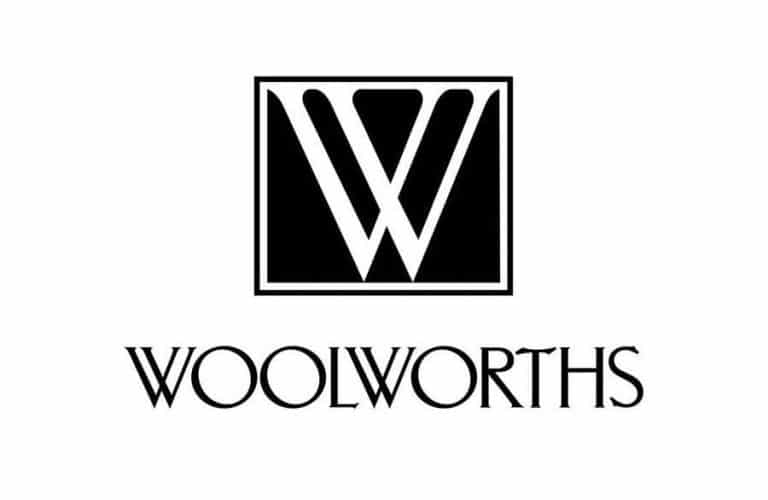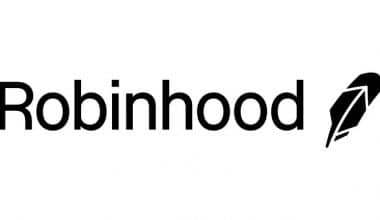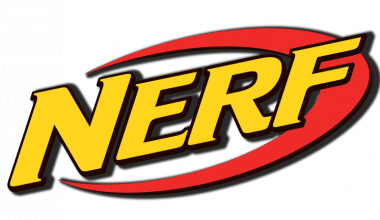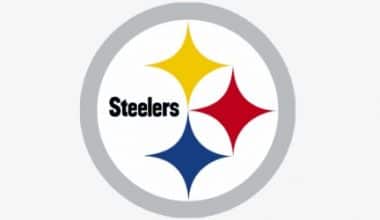Woolworths Group debuted a new logo design in early 2022 to “better portray its evolution as well as what its collective platforms and businesses represent.” The company’s classic logo, which depicted its name alongside its five brands drawn in five different colors, was replaced by the new corporate identity. At the same time, Woolworths’ traditional business logo remained unchanged.
But what is the story behind the Woolworths Group’s old and new logo? In this article, we will take a look at the history of theWoolworths Group logo, from its humble beginnings to its current sleek and modern design. We will also discuss the meaning of the logo and its significance to the company.
Overview
The retail company was founded in 1931. Max Sonnenberg and his son opened the first Woolworths store in Cape Town that year. This retail chain now has over 600 stores in South Africa and 65 stores in other African countries.
Despite the fact that the Woolworths logo is over 80 years old, the design of the brand identity has remained largely consistent over the years. There has only been one minor change. The meaning associated with the mark’s chosen color, font, and shape is simplicity, balance, and stability.
Woolworths Logo Evolution
1960–1972
This era’s design featured a solid black uppercase “W” inside the upper part of a triangle, with five-star symbols scattered beneath it. The inside of the triangle was white, with a thick black outline.
1972–1987
The Woolworths logo at the time was a stylized red “W” icon placed beneath a red “Woolworths” wordmark written in uppercase letters. The “W” icon appeared to be two identical shopping bags placed next to each other.
1987 to 2007
From 1987 to 2007, Woolworths used the slogan “The Fresh Food People,” which it still uses in some Australian locations such as Eastwood and Booragoon.
The italicized phrase “The Fresh Food People” in green is placed above the red “Woolworths” wordmark between three red-and-white bars in the design.
2007–2012
Woolworths’ current stylized green “W” icon was introduced in 2007. The icon is made up of two green apples that overlap to form the letter “W.” The “Woolworths” wordmark in red was placed beneath the icon, above the slogan “the fresh food people.”
2012–2014
The previous Woolworths logo design was retained during this brief period, but red was removed from the color scheme. To reflect its promise to deliver fresh Australian produce to its customers, the company changed its slogan from “the fresh food people” to “Australia’s fresh food people.”
During this time, Woolworths’ original slogan, “the fresh food people,” was revived. The green stylized “W” icon and the “Woolworths” wordmark were retained.
2015–Today
The current green stylized “W” icon representing Woolworths first appeared in 2007, and the wordmark and slogan have undergone a few minor changes since then. A new handwritten variant of Woolworths’ slogan began appearing in catalogs in late September 2015.
Font
The wordmark “Woolworths” is in bold sans serif typeface in the 2010 version, and the letters are smaller in size than in the old Woolworths logo. Everything appears to be simple and straightforward.
Color
The company’s color scheme has always been black and white. The logo can also be presented in reverse colors, with the black “W” in a white square and the word “Woolworths” in white against a black background.
White connotes openness and something positive, whereas black connotes professionalism. This color scheme represents a dedication to quality and balance.
Woolworths: The History
Woolworths (also known as “Woolies” in Australia) is a grocery store and supermarket chain owned by the Woolworths Group. It was Australia’s largest supermarket chain in 2019, accounting for 33% of the market.
Woolworths sells groceries (vegetables, meat, fruit, packaged foods, and so on), magazines, health and beauty products, DVDs, stationery, baby and pet supplies, and household goods. By June 30th, 2020, there would be 64 Woolworths Metro grocery stores and 987 Woolworths supermarkets.
Woolworths Online (formerly HomeShop) is the home delivery and “click-and-collect” service offered by Woolworths supermarkets.
History from the Beginning
Ernest Williams, Percy Christmas, Stanley Chatterton, Cecil Scott Waine, and George Creed founded Woolworths Group (formerly Woolworths Limited) in Australia in September 1924.
In December 1924, the quintet opened their first store, “Woolworths Stupendous Bargain Basement,” in Sydney’s Imperial Arcade. The supermarket had only 29 shareholders when the first store opened, and no one seemed interested in accelerating the brand’s growth. However, as more capital was invested and operations continued, the company’s dividends increased from 5% to 50% by the third anniversary of its operation.
After December 1924, as more Woolworths stores opened across Australia, more customers became interested in them. Woolworth stores began selling a variety of products, offering the lowest prices as well as money-back guarantees. Woolworths was the world’s first variety store to install printing cash register systems in 1926, setting the standard for innovation.
Woolworths opened its second supermarket on Queen Street in Brisbane in August 1927. Two years later, Woolworths opened its first store in New Zealand, but the company is now known as Countdown. Woolworths had stores in every state of Australia by 1940.
With Woolworths and its branches doing well, the company began experimenting with expanding its grocery collection—more stores began stocking fresh vegetables and fruits, as well as a wide variety of food.
Read Also: Goldman Sachs Logo: History, Evolution & All You Need
Woolworths opened its first self-service location in Beverly Hills, Sidney, in 1955. The company opened its first supermarket in Dee Why in 1958, followed by its first purpose-built supermarket in Warrawong in 1960. Woolworths opened its first department store in Tamworth, New South Wales, in 1976, as it gradually specialized in groceries.
Woolworths and Coles Supermarkets stopped giving out single-use plastic bags at checkout in 2018, following the lead of Aldi, Australia’s third-largest supermarket chain. In the next three months, Australia’s plastic bag use fell by 80%, resulting in 1.5 million fewer plastic bags ending up in landfills. In the same year, Woolworths pledged to eliminate 180 tons of plastic packaging from their products.
Slogans
After implementing new company practices in its fresh food departments, Woolworths coined the phrase “The Fresh Food People” in 1987.
The slogan was slightly changed in 2012 to “Australia’s Fresh Food People,” reflecting that Woolworths supermarkets sold 96% of fresh produce grown in Australia. With a new series of television commercials, the company revived its first slogan, “The Fresh Food People,” in 2014.
Acquisitions
Woolworths Ltd purchased all 32 Cash & Carry stores in Brisbane in 1958. The well-known Brisbane grocery stores were later rebranded as Woolworths.
Woolworths Ltd purchased two Tasmanian grocery brands, Purity and Roelf Vos, in 1982 and converted them into Woolworths stores 18 years later.
Woolworths acquired Australian Safeway Proprietary Limited in 1985 after the giant US supermarket chain Safeway Inc. entered the country in 1962. In exchange for a 19.99 percent stake in Woolworths Limited, the company acquired all Safeway locations and the naming rights. Safeway operated 126 stores in New South Wales, Queensland, and Victoria.
All Safeway stores in New South Wales and Queensland were rebranded as Woolworths, but most Safeway locations in Victoria remained open. Woolworths announced in June 2017 that it would rebrand Safeway locations as Woolworths.
Loyalty Programs
Woolworths’ loyalty programs include various incentives for customers to shop at their grocery stores and supermarkets, such as subsidizing fuel prices at the company’s Caltex gas stations and the now-defunct Woolworths Plus Petrol. The discounts ranged from 2 to 10 cents off per gallon of gasoline and were awarded for purchases exceeding certain thresholds.
Everyday Rewards and Credit Cards
In September 2007, Woolworths began testing the Everyday Rewards program in west-central New South Wales. Everyday Reward is a card that automatically tracks Woolworths supermarket purchases and fuel discounts, eliminating the need for customers to keep paper coupons. Furthermore, it allows Woolworths to track purchases, offer customers relevant promotions, and conduct marketing and demographic research.
This came after the company announced that it would launch a general-purpose credit card a year later. Credit cardholders with general use cards were given reward vouchers that could be redeemed at any Woolworths supermarket or grocery store. Woolworths announced shortly after that it would launch its Everyday Money MasterCard in August 2008, allowing customers to earn shopping cards that could be redeemed at any Woolworths store.
Woolworths announced that it would roll out its Everyday Rewards program across the country following the trial in New South Wales. Implementation began in the North Territory and South Australia in mid-February 2008, with the remaining states (except Tasmania) following suit by May 31st, 2008. Customers in New South Wales received 50,000 cards as part of the pilot program.
Read Also: Berkshire Hathaway Logo: Evolution & History
Woolworths announced in June 2008 that over 1 million customers had been issued and registered with a card. Shoppers were given 3.8 million Everyday Rewards cards two months later, with 2.4 million registered.
Everyday Rewards cardholders were eligible for Qantas Frequent Flyer tokens through their cards beginning in June 2009. Those who successfully linked their Everyday Rewards card to their Qantas Frequent Flyer card could earn 1 Frequent Flyer point for every dollar spent at any Woolworths store above $30.
In response to customer feedback, Woolworths made significant changes to its Everyday Rewards program in August 2016. Everyday Rewards cardholders would earn one point for every dollar spent on relevant products at Caltex Woolworths fuel stations and Woolworths supermarkets. When a customer accumulates 2000 points, they will receive a $10 discount on their next purchase at any Woolworths supermarket.
Shoppers were also allowed to accumulate their discounts until the holiday season, allowing them to use them from December 1st to January 1st every year. Woolworths also reinstated the ability for customers to earn Frequent Flyer points by using their Everyday Rewards card. Customers who have accumulated 2,000 Everyday Rewards points can exchange them for 1,000 Frequent Flyer tokens.
Conclusion
\Woolworths Group Ltd is a publicly traded Australian company that generates revenue by selling fresh Australian produce and general merchandise. Woolworths employs approximately 210,000 people and is headquartered in Sydney. It operates throughout Australia and New Zealand.
They were founded in Sydney in 1924 as Woolworths Limited, a variety retailer; the supermarket and grocery chain store expanded into New Zealand in 1929 and has been operating in all Australian territories and states since 1960.
Since 2012, Woolworths has undergone significant consolidation, divesting its hospitality, liquor retailing, fuel retailing, home improvement, electronics retailing, and shopping center businesses to focus on its supermarket operations.
In Australia, Woolworths owns Woolworths Supermarkets, Big W discount department stores, and the Everyday Rewards customer loyalty scheme. The company owns the Countdown, FreshChoice, and SuperValue supermarkets in New Zealand.
Related Articles
- HOW TO SAVE MONEY ON GROCERIES in 2023
- HOW TO PLAN FOR RETIREMENT: Complete Guide
- Best 10+ Grocery Delivery Service: Top Services to Work For
- PUBLIX LOGO: The Story Behind The Logo
- Walmart Thanksgiving Hours & Other Stores Open On Thanksgiving 2023






